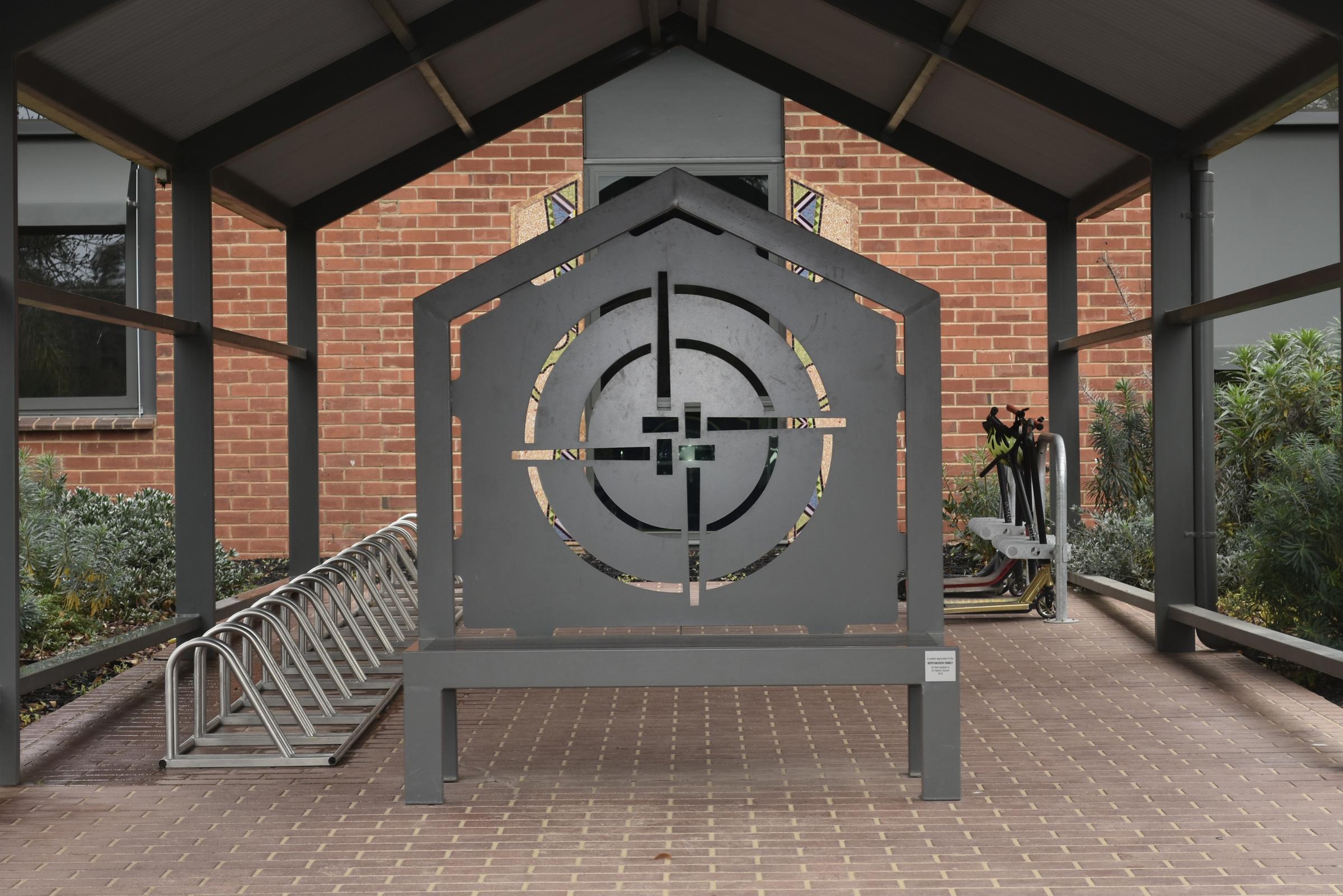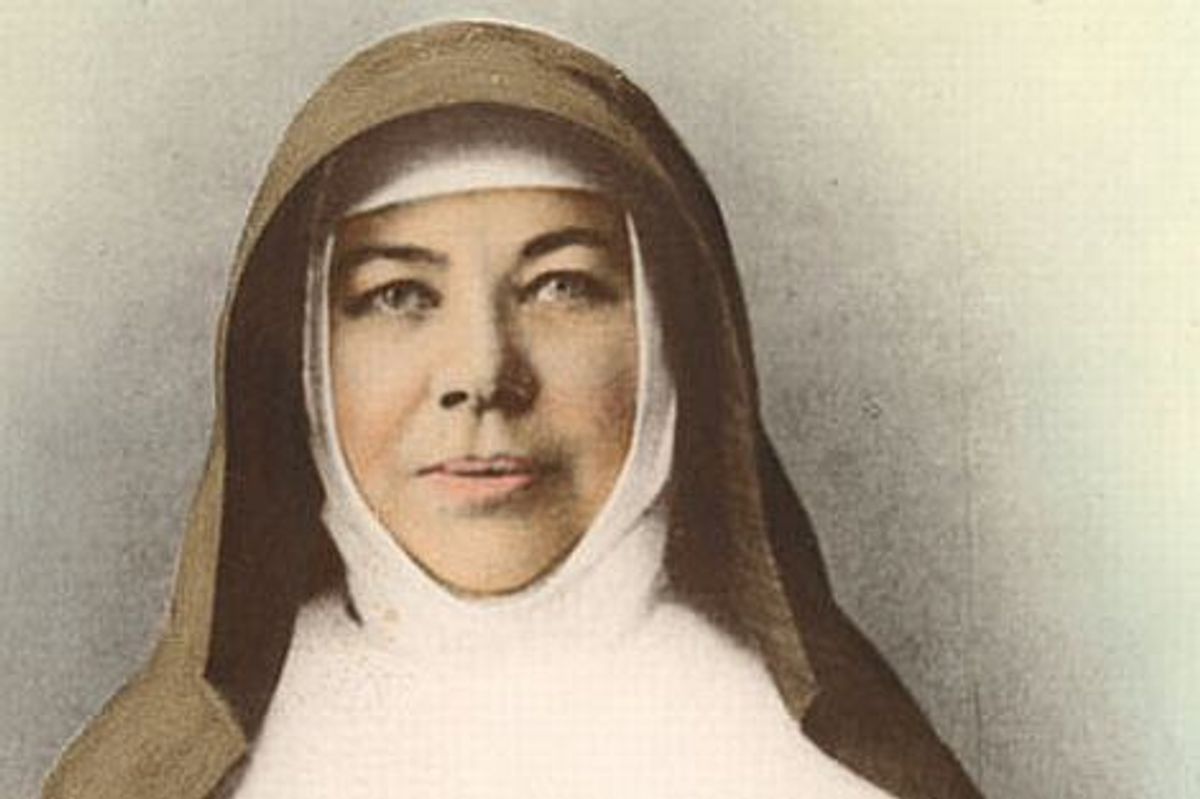Catholic Identity
Leader: Katie Rasmussen

Catholic Identity
Leader: Katie Rasmussen
Mary MacKillop is Australia’s only saint. On the 8th of August we celebrate her Feast Day. Mary was canonised in 2010. There are many Josephite schools in the Sandhurst Diocese that were founded by Mary and the Josephine sisters including St Joseph’s Numurkah, St Mary’s Rushworth and St Joseph’s Nagambie.


Here is an overview of her life and achievements…
Mary MacKillop's life does not just tell us about a brave and determined woman who has become a saint. It also says something important about Australia and the Australian Catholic Church today, and about the vision we need as Australians and Catholics. In this feature, Fr Andrew Hamilton SJ takes us through the life of St Mary of the Cross MacKillop. We also look at how the works she began are continued by the Josephites and their friends today.
How did Mary MacKillop manage to do so much? She took responsibility for her younger brothers and sisters when she was only 11 years old. She was a governess and teacher by the time she was 18. She helped form a religious congregation at the age of 24. Before she was 30 she was wrongly excommunicated and badly treated by Bishops. She spent time in Rome negotiating approval of her Congregation. In the care of her congregation she travelled by boat, coach and train around Australia, New Zealand and Europe. Even after she suffered a stroke she was re-elected Mother General of the Josephites. Mary's vision was at once large, small and Catholic. It was always larger than the resources she had to achieve it. She never took the easy path. She did not want only to show sympathy to deprived children. She wanted to open schools for them. She did not want simply to do good works alone. She wanted to be part of a band of women dedicated to the poor. She did not confine her work to one part of Australia or of the Catholic Church. She wanted to serve poor children wherever there was need and wherever her Congregation was wanted. She faced many conflicts with people whose vision was smaller than her own.
But Mary's vision also focused on small things. What mattered to her was people. And in people, what mattered most was the heart which is open to love and be loved. Wherever she went she met children in schools, visited prisoners in jails and encouraged the Josephite sisters who taught in schools and cared for poor children. She saw each human being as important in God's eyes and her meetings with each person always spoke of God's love.
Mary's vision was both large and small because it was a Catholic vision. She was inspired by faith and lived her faith in the Catholic Church. No matter how badly she was treated by other Catholics, the church was God's family and her home.
In her relationships with bishops and clergy she was always respectful, always put the best face on abusive behaviour towards her, and refused to enter into public debate. But she was like rock in defending the castle of the heart where she and her sisters took their religious vows. Once her Congregation was approved, she would not allow their commitment to it to be altered at the whim of local authorities.
Mary took the name Mary of the Cross. Her life was a series of trials and humiliations. What kept her going was ultimately God's love shown through the pain of Christ's cross. Her pain, like Christ's, was intensely personal, but borne for the salvation of many.
1. Burdened with responsibility
From her own childhood, Mary knew all about poverty and the importance of education. Her own family fell on hard times in an Australia where there was no safety net for families in distress. If a parent died, the family could be forced into extreme poverty, and perhaps broken up. In this harsh world, children were inevitably the victims. They could remain illiterate because there was no free education available and no one to send them to school.
Mary was fortunate because her parents took education seriously, but her childhood was burdened with heavy responsibility. As she grew older, she looked after the children of her relatives and had to keep the family together. She says of her childhood, 'My life as a child was one of sorrow, my home when I had it, a most unhappy one'.
Her own struggles gave her a great sympathy with poor children who had no access to education. It was not surprising that the first Josephite works included homes to care for destitute women and schools for poor children.
2. Founding of the sisters
When Mary first went to work for her relatives in Penola she met Fr Julian Tenison Woods, the young parish priest. She wanted to give herself to God as a religious sister. He wanted people to help with the education of the poor. So in 1866 she and some of her friends became religious sisters. They followed a short rule of life given them by Fr Woods. Mary was then 24 years old.
They quickly moved from Penola to Adelaide, where Julian Tenison Woods was director of Catholic education. With the encouragement of the Bishop she began a school there.
The heart of their work was to educate and care for poor children. The schools and the number of young women attracted to the Congregation increased rapidly. When the Bishop of Brisbane asked them to come to his diocese, Mary accompanied a group of sisters there. As in many other parts of the church, the sisters lived very poorly. They had to beg for their schools, their living and transport.
Why St Joseph?
The new congregation founded by Fr Woods was dedicated to St Joseph. For Mary, as for other Catholics at the time Joseph was a no-nonsense saint, close to Jesus, totally dedicated to the welfare of his family, and with a gift for getting on with it.
In one of her letters to her sisters Mary speaks of St Joseph's humility, saying:
'Sisters, this was a quiet humility, grounded on submission to the adorable will of his God. It was a humility of heart, not of words, a silent not a noisy humility.'
That was Mary's own way.
3. Bearing the Cross
Mary soon recognised that her decision to call herself Sister Mary of the Cross, was prophetic. In her early years with the Congregation she experienced much pain. This came partly from the hostility and erratic personality of some church authorities. But it also reflected a natural tension between the special commitment of the Sisters to the poor and the local bishops' desire to use the sisters for their own projects.
These tensions showed themselves quickly in Adelaide. Many well-off Catholics disapproved of sisters begging. They also resented the singleminded commitment of the sisters to provide basic education for the poor. They wanted good secondary schools. Some clergy shared these feelings, and wanted the sisters to take Government money. This would have affected their curriculum. In Mary's absence in Brishane, too, Fr Woods had naively trusted manipulative sisters who claimed to have had visions. Alarmed, Bishop Sheil who was naturally erratic and was advised by people hostile to Mary, tried to change the rules of the congregation and its educational emphases. When Mary would not accept such arbitrary changes to the rule, Bishop Shiel excommunicated her illegally. When he died in 1872, the Congregation was again endorsed.
This crisis led Julian Tenison Woods and Mary to seek approval from Rome for their rule. Mary went to Rome and eventually received a rule that placed the sisters under their own Superior and committed them to the poor. In 1875 the sisters of the congregation then elected her Mother General. But conflict soon arose with Bishops who wanted the sisters under their own control. Mary had to withdraw her sisters from Brisbane and Bathurst over this issue.
Bishop Reynolds, alarmed that the spread of the Josephites into New South Wales would affect the resources of the Adelaide Church, called an enquiry into the Congregation. He pretended that the Vatican demanded the enquiry, put the sisters illegally under oath, and deposed Mary on false charges. Rome ordered an investigation, cleared Mary and reconfirmed its support for the Josephite rule.
Eventually, some local Bishops established Josephite Congregations. Novices were permitted to join them. So were those who had taken vows under the Rule that Rome had approved. But they first needed to be released from their vows, and then they were free to commit themselves to the new Congregations. They eventually wore black robes to distinguish them from the Brown Josephites. The old tensions between the two orders have now disappeared.
A blessing from Rome
'On Sunday I had the happiness of seeing the Holy Father and of obtaining a warm blessing from him for myself and my dear sisters. What he said and how he said it when he knew I was the excommunicated one, are things too sacred to be spoken of—but he let me see that the Pope has a father's heart, and when he laid his loved hands on my head I felt more than I will attempt to say.'
Mary MacKillop, in a letter to her mother, June 1873.
4. Later Years
When in 1885 Mary received definitive Roman approval for her Congregation, Mother Bernard was named its Superior. Mary acted as her assistant. She travelled widely, visited the Sisters, and spent much time in New Zealand where the demand for the Sisters had grown. They had established a school for Maori children. Mary also wanted to have sisters work with Indigenous Australians, but this never eventuated in her life time.
By this time Australian governments had instituted free and secular public education. Concerned for the faith of Catholic children, the Bishops responded by building schools to educate all Catholic pupils. This relied heavily on religious sisters and brothers, including the Sisters of St Joseph.
After Mother Bernard's death in 1898, Mary was again elected Mother General. Despite her uncertain health she continued to travel. She revisited New Zealand where she had a stroke in 1902. She was reappointed Mother General, but was soon confined to a wheelchair and died in 1909.
The Josephite spirit today
Sr Patricia Keane RSJ took her vows as a Josephite Sister 45 years ago. She describes what it means to be a Josephite sister.
I think the Josephites have a fairly down to earth approach to life. We're there for the ordinary person, and because of that a lot of people identify with us.
The Josephites were the first nuns in South Australia. They went out into the country areas and lived in the same conditions as the people. They weren't afraid of getting out there and doing the hard yakka.
The women these days are also committed in amazing ways, in the distances that they travel to go out to be with the people, particularly people in rural areas, and helping the Aboriginal people, and in New Zealand working with Maori people. They are out there helping in any way that they can.
Sr Patricia is the Director of the Mary MacKillop Centre in Kensington, Adelaide.
Catholic Social Teaching (CST) is rooted in Scripture, formed by the wisdom of Church leaders, and influenced by grassroots movements. It is our moral compass, guiding us on how to live out our faith in the world.
The CST principles which inspire our work are:
Our faith calls us to love God and to love our neighbours in every situation, especially our sisters and brothers living in poverty. Following in the footsteps of Christ, we hope to make present in our unjust and broken world, the justice, love and peace of God.

